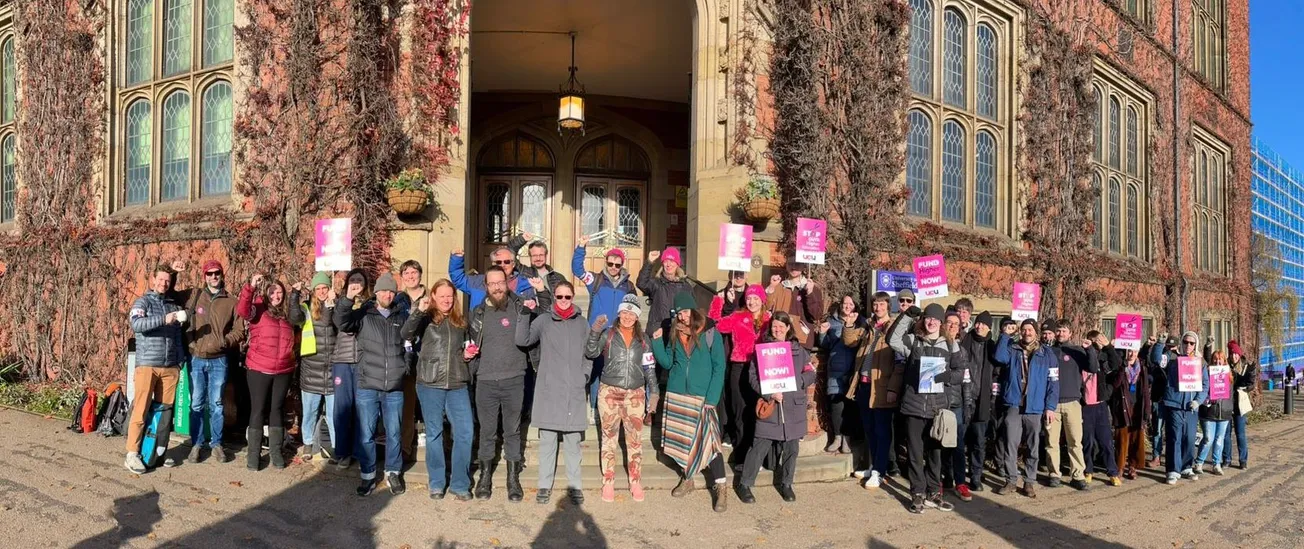These days, the best park in Sheffield is on the Manor. If you have Endcliffe or Millhouses park on your doorstep, chances are you don’t even know it exists. But every summer Manor Fields Park burns with a slow firework display of meadow flowers which the city’s better known green spaces can only dream about.
Heather is here as well, says part-time park manager Ted Talbot. He explains the urban heathland here might well date back to the time this was part of Sheffield’s deer park. “A few hundred yards away just over there, the ladies would stand on the top of Manor Lodge and watch the gentlemen kill their deer,” he tells me.
Record temperatures this month, and the downpours of recent winters, mean we need to think a bit more about what our urban parks are for in the years to come. After years of penny pinching and government austerity, tired-looking traditional parks may no longer fulfil the civic tasks required of them.

Many were originally designed simply as “ornamental places to promenade” says the original development officer for Manor Fields, Roger Nowell, who remembers counting 130 burnt-out cars left on the site off City Road during one year in the late 1990s, when work began to transform the old Deep Pits Park with the help of over £2 million worth of European and national regeneration grants.
Designing a park with tennis courts and acres of mown grass was not the plan. Instead, the design team looked at how the hillside park could help the whole city’s urban drainage system by using the site to capture water runoff from the surrounding estate.
They also wanted to consider the long history of the area, from deer park to farmland and coal mining to joy riding. Designing beautiful fences kept out joy riders and also helped to make the park so visually appealing that no one in their right mind would consider vandalism. They also made use of the location’s older history by harnessing the landscape of deer park and coal mines to turn the space into something stunning that locals would love. Walking through Manor Fields Park on a sunny day, I’d say they succeeded.

The 50-acre park includes a network of water channels leading from nearby housing estates into the grounds. Last week’s heat meant they were barely visible, but after heavy rain, when surface water gushes off local rooftops onto the street, it’s captured by channels and cleaned by vegetation and small ponds as it runs down the hill. If water levels are high (as they were after the deluges earlier this year), larger ponds start to appear on some of the banked flat ground used for football and picnics in the summer. This is an early and much larger version of the Sustainable Urban Drainage Schemes (SUDS) hidden under the Grey to Green flowers in the city centre.
The Manor Fields SUDS is designed to slow and clean the flow of surface water into the city and help prevent flooding by holding rain water on the hillside for much longer than it would take to travel to the Lower Don via roadways and drains.
The next step was to make sure the new park would be used by locals who’d feared to enter the former Deep Pits area plagued by joy riders and vandals. So Professor Nigel Dunnett and his landscape team from the University of Sheffield used the Manor as a test bed for trial seed mixtures for poor soil designed to transform roadside verges and neglected urban sites into months of colourful flowers: the “slow firework display” showing from now until September in several city centre pocket parks and Manor Fields.

Purists may question the use of garden seeds in what aims to be a haven to encourage local wildlife, since many ecologists insist Yorkshire wildlife thrives best on Yorkshire flowers .
But as Ted Talbot wanders round the park, he observes native birds foot trefoil, heather and rosebay willowherb mixing with cultivated daisies, the fluffy “lambs ear” or Staychs garden plant and the striking “giant white fleece flower” planted as an experiment to fight it out with brambles while flowering like mad.
“This is not a National Park or a protected landscape, so we can be a little more liberal with our use of garden flowers,” says Ted. He tells me that since we’re in an urban park setting, anything that provides food, shelter and nectar already starts to help insects, birds and mammals.

There’s one second big priority for modern urban parks. The international nature emergency — that is, the loss of species — means that insect numbers are plummeting and biodiversity is diminishing across the UK. This might not sound like a big deal…except that it might mean life or death for mankind. According to the zoologist and conservationist David Macdonald, a professor at Oxford University who was quoted in a Guardian essay on the topic, “Without biodiversity, there is no future for humanity.”
So, with this not-unimportant consideration in mind, does your local park enable a wide range of wildlife to live there? There were once coal mines, allotments and farms on Manor Fields, as well as places for medieval aristocrats to chase deer. As such, there are allotment plants and a host of farmland grasses trying to survive among the wild flowers and recent plantings.
“When we started it was a real mess which was hard to control, with brambles and bindweed and even some Japanese knotweed we had to get rid of,” says Ted. Adding muscular garden plants to the mix may provide “a bit of a mongrel,” he says. “But if you’re a butterfly or a bee or a vole in an urban context, you don’t mind. Or a human being, for that matter.”

A kingfisher has been seen in one of the park ponds, and buzzards fly overhead looking for voles and mice hiding in the long grass. Local residents love it too, judging by the number of people enjoying the park on the sunny weekday afternoon Ted shows me around. It’s easy to see why. As we wander through the gentle undulations of the landscape it seems astonishing to think the traffic and trams of busy City Road are just a stone’s throw away.
The type of activity often (but not necessarily correctly) associated with the “old Manor” hasn’t entirely disappeared though. But the nightime murder of Sheffield pizza chef Carlo Giannini in or near the park in May doesn’t seem to have changed the park’s image for locals, and families from the estate pass by as Ted excitedly identifies golden tansies and pale blue vetches shimmering in the summer breeze.
None of the pram walkers and afternoon strollers in Manor Fields will thank you for remembering Roy Hattersley’s infamous remark slating the estate as one of the worst in the country in the late 1990s, not least because it’s as much history now as the coal mines. “Someone used the word ‘gentrification’ about the area to me last week, and that’s the first time I’ve heard it mentioned,” says Ted. “Now is that a good thing or a bad thing? I don’t know. But I don’t think we should be down on people who are aspirational.”

Manor Fields won an international Green Flag Award again this year, and hosts a parkrun, along with cycling, walking and gardening groups admiring the park’s artworks and sculptures. The hills allow spectacular views across the city over a mixture of heathland, trees and meadows. If it was three miles to the west in Endcliffe or Millhouses park, there would almost certainly be tai chi classes here, and a little van serving oat milk lattes.
It looks like this because Manor Fields has a plan: right from the start it was managed by the Green Estate social enterprise, set up to look after Manor Lodge, Manor Fields and several other local green spaces to benefit the people of S2. Green Estate gets a council grant towards some of its landscape work, and also raises money from commercial landscape management, green waste disposal and venue hire. The Pictorial Meadows seed and flower planting enterprise now working all over the UK was also started on the Manor by the University of Sheffield and is now part of Green Estate.
In most cases, however, funding for parks is very much at risk at a time when we need them most, says Ted. The science is now showing that mixing socially in nice green spaces is better for our wellbeing and mental health than prescribed drugs. People used parks to stay sane during the pandemic, and in a heatwave, trees and transpiration from green grass and foliage cools a city’s air and ground.

After years of austerity to the public sector, local authorities inevitably focus on non-statutory services, like museums, libraries and parks, when they have to make cuts, says Ted.
“I see no practical evidence that this is turning into anything other than a catastrophic decline in the funding of parks and countryside. But it is an archaic approach if you do the maths on preventative health and keeping people out of the NHS.”
Like they do in Australia, he adds, where the health services of the state of Victoria fund local parks as they know they make the population fitter and healthier. It’s not rocket science, he tells me. The Duke of Norfolk may have donated Norfolk Park to Sheffield partly out of philanthropy to provide places for healthy activity in the outdoors.

“But it was also sensibleness,” says Ted. "Because at the time the main other recreational activities were dens of iniquity, gin palaces and gambling, and we know the modern versions of those things are still pulling people away and ruining them.” I’m not sure I agree with Ted on the life-ruining properties of a quick tipple, but surely more parks can only be a good thing.
The people of the Manor are proud of their park, he says, but such places need to be commonplace across the country, and facing both nature and climate emergencies, we need them to arrive everywhere, and quickly.
“The civic reason for parks is the same as it’s ever been, since the Victorians started building parks as islands of nature in cities, instead of wall to wall buildings like Bladerunner.”
The Duke of Norfolk might have been baffled by Bladerunner, but he’d probably get the point of Manor Fields. Last year, a roe deer was spotted just a mile away down the hill. Maybe the wilder areas of the Manor estate will now encourage the original residents of the great Sheffield deer park to make their way home.
Comments
How to comment:
If you are already a member,
click here to sign in
and leave a comment.
If you aren't a member,
sign up here
to be able to leave a comment.
To add your photo, click here to create a profile on Gravatar.







